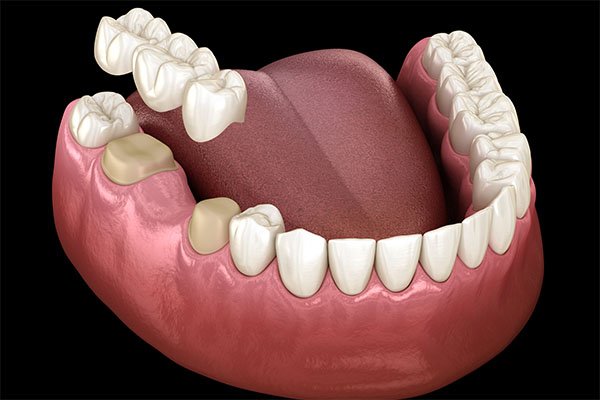 If you are missing teeth, cosmetic dental services, such as dental bridges, may be able to help. Dental bridges fill the space left by missing teeth, which can improve your confidence, enhance your smile, and prevent your remaining teeth from shifting.
If you are missing teeth, cosmetic dental services, such as dental bridges, may be able to help. Dental bridges fill the space left by missing teeth, which can improve your confidence, enhance your smile, and prevent your remaining teeth from shifting.
Many treatments overlap between cosmetic and restorative dentistry, and dental bridges are one of them. Bridges can be a cosmetic improvement to your smile and a functional and beneficial addition to your oral health.
Cosmetic dental services include dental bridges
Dental bridges can improve a patient's smile by filling gaps caused by missing teeth, which is considered part of cosmetic dentistry. However, cosmetic dental services like bridges can also be functional and improve overall dental health.
Benefits of dental bridges
Many individuals go through life with missing teeth. However, this can impact a patient’s confidence, oral health, and quality of life. Notably, patients may be embarrassed or self-conscious about their smiles. They may find it difficult to smile for photos, eat certain foods, or speak in public.
Missing teeth can lead to dental issues if left untreated. Typically, the patient’s remaining teeth will start to shift to fill the space. Shifting teeth can impact the patient’s smile and the alignment of their bite. Poor bite alignment can lead to uneven wear and tear, increased pressure on certain teeth, and TMJ or teeth grinding disorders.
Since dental bridges fill the space left from a missing tooth, they can solve these issues. Dental laboratories fabricate bridges from durable materials that can withstand biting pressure. They are also shaped and colored to look like natural teeth.
Four common types of dental bridges
With this treatment, the dentist will create crowns for the teeth on either side of the gap. They will bond the crowns to the pontic, or artificial tooth, in between.
Today, dentists rarely use cantilever bridges because they can put too much force on the remaining healthy teeth. A dentist may offer this type of cosmetic dental service when there is only one adjacent natural tooth to the missing tooth or teeth. With Maryland bonded bridges, the dentist will cement the bridge to the backs of nearby supporting teeth.
Implant-supported bridges do not require support from the surrounding teeth. Instead, a dentist will surgically insert implants into the patient’s jaw. The implants will support the bridge. Implant-supported bridges may require one or two minor surgeries under local anesthetic.
Materials for dental bridges
Dental labs can fabricate dental bridges from various materials. Options may vary depending on the type of dental bridge, but the most common materials are composite resin, porcelain, or porcelain fused to metal. Regardless of the material, the dental bridges look, feel, and function like natural teeth.
Learn more about dental bridges
Cosmetic dental services, such as bridges, are functionally restorative and aesthetically pleasing. If you are missing teeth, dental bridges can restore your smile and prevent future issues. We are happy to recommend a treatment that will be best for your situation. Contact our office today to schedule your appointment.
Request an appointment or call Smiles by Design, PC at 256-660-3233 for an appointment in our Huntsville office.
Related Posts
Cosmetic dental services can help improve the color of your teeth. Teeth start white, but they pick up stains as a person's life goes on. Some of these stains come from the coloring agents in the foods and beverages that we consume, while habits like using tobacco products cause others.Teeth can also become discolored as…
Cosmetic dental services should not be confused with restorative procedures. Cosmetic treatments aim to improve the way that your teeth and gums look, while restorative treatments are performed to restore the function of damaged teeth.However, many restorative treatments used in dentistry also provide cosmetic benefits. Crowns, for example, are designed to look like natural teeth.…
Cosmetic dental services often involve using tooth-colored restorations to restore damaged, decayed, or discolored teeth. Restorations, like crowns, can be made from materials like gold, silver, and metal alloys, but these materials look nothing like natural teeth. Most patients prefer restorations made from materials that share properties with real teeth, like porcelain, ceramics, and composites.…
